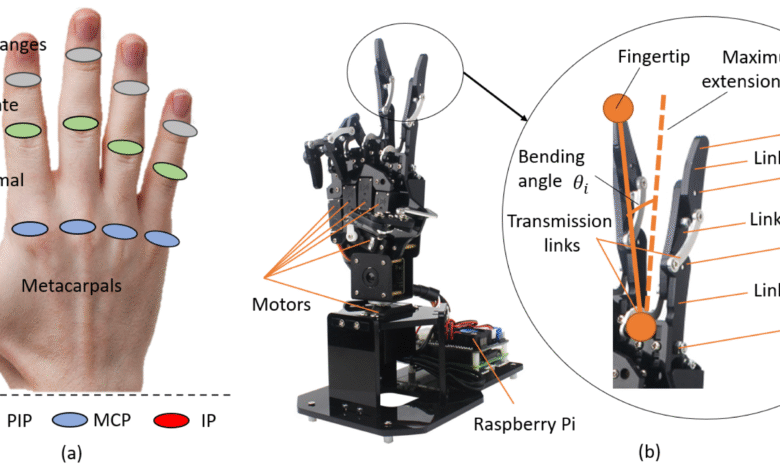Control at Your Fingertips: The Mechanics Behind Modern Medical Visualization Tools

How well diagnostic and surgical tools do their job depends greatly on the precision and accuracy of their mechanical parts. One such component, the endoscope angulation wire, plays a pivotal role in the maneuverability and control of modern medical equipment used for minimally invasive procedures.
Small but important, angulation wires support physicians with the flexibility they need to move within the body and offer accurate results. This article delves into the fascinating mechanics of endoscope angulation wires and their critical impact on the functionality and future of medical visualization tools.
What Is an Endoscope Angulation Wire?
An endoscope angulation wire is a slender, flexible cable embedded within an endoscope that controls the bending and directional movement of the device’s distal tip. Embedded cameras inside endoscopes let doctors see what is happening inside the body as they examine different cavities. Thorough examination, diagnosis and treatment in gastroenterology, pulmonology and urology are possible mainly because the tip of the endoscope can be carefully handled.
When the control knobs on the handle are turned, the force is sent through the angulation wire to the bending part at the endoscope tip. If a physician turns these control knobs, tension is created on the angulation wire which causes the distal end of the tool to bend in certain directions. Thanks to its controlled flexibility, the endoscope is able to navigate tight and winding areas in the body, so doctors can see what needs to be treated, without surgery.
Although angulation wires are simple, they need to show excellent mechanical performance. It should not break or stretch because of being pulled, yet it should bend easily inside the narrow endoscope tube. Commonly, wires are manufactured with high-strength stainless steel or special alloys built for continuous flexing and sterilization.
How Angulation Wires Enhance Medical Equipment Functionality?
The presence of high-quality angulation wires significantly elevates the performance of medical equipment by enabling fine control and responsiveness in endoscopic procedures. Because of this, doctors and other medical professionals are better able to make accurate diagnoses and select the right treatment approaches.
To begin with, correct angulation aids doctors in orienting the camera in several ways which makes it easier to view. Looking at the body from many angles helps find small tumors, polyps or lesions that might otherwise go unnoticed. If the angulation wire could not move the endoscope, the procedure would be limited which could affect what the doctor could see and the patient’s results.
In addition, angulation wires make procedures safer. Uniform, controlled bending reduces the chances of tissue injury or damage in thinner or more fragile parts inside the body. Should the bending mechanism work smoothly, the physician does not have to worry about it during the procedure.
Also, endoscopic surgeries and other advanced therapies use angulation wires to position devices precisely. By having more control, doctors can carry out necessary treatments such as biopsies, polyp removal and stent placement which help shorten both the treatment and recovery periods.
Engineering and Design of Angulation Wires:
The design and engineering of endoscope angulation wires represent a fine balance between material science, mechanical engineering, and ergonomic considerations. Wire makers use a lot of resources to create products that comply with tough requirements for their performance and safety.
Choosing the correct materials is very important. The wires have to stay strong even after being flexed many times. Because of their high strength, nitinol and other shape-memory metals in stainless steel are widely used in medical devices. Because these materials resist corrosion, they suit medical devices which are often sterilized many times.
The diameter and level of roughness on the wire are specially developed to help movement and friction inside the endoscope. An even surface lowers stress on the implant, so angulation stays simple even after repeated cycles.
Also, the wire is often covered with high-quality polymer coatings or lubricants to increase durability and cut down on friction. These coatings keep the wire safe from possible chemical reactions during sterilization.
Ergonomics plays a key role as well. Responsiveness in both the wire and the interface needs to be similar so that any movement made is obvious to the surgeon. Ensuring the two parts interact means that handle motions lead to specific and steady pen movements.
Reliability and Maintenance in Medical Equipment:
Given their critical role, the reliability and maintenance of angulation wires are paramount for the safe operation of medical equipment. Especially in the clinical environment, where bending, contact with bodily fluids and sterilization are usual, angulation wires are always being stressed.
Routinely inspecting and servicing your line rope will allow you to notice any damage, including fraying, corrosion or loose wires. Facilities routinely assess and inspect endoscopes both before and after each use to make sure the angulation wires are working properly.
Trouble with angulation wires can result in losing control, taking more time to complete the surgery or dangerous results for the patient. Hence, manufacturers make wires wider than the minimum needed so that they are unlikely to snap all at once.
Also, new approaches in manufacturing now use modular wiring that simplifies the fixing of broken wires and keeps downtime to a minimum. When techs are trained to handle and take care of these components, it extends their useful period.
Innovation and the Future of Angulation Systems:
The future of endoscope angulation wire technology is poised for exciting advancements, fueled by innovations in materials science, micro-engineering, and robotics. Different groups in this field are examining designs that improve flexibility, durability and responsiveness.
Smart materials are being studied that can alter their stiffness or length in response to outside triggers, helping to control the leg angle automatically. Such materials help to make robot-assisted surgery more flexible to match the anatomical characteristics of every patient.
Technology is also bringing robotic support to endoscopy. In these settings, wires that bend the bones may be left out and instead miniature actuators and sensors which allow for even greater accuracy than a surgeon’s hand, are used. But these robotic systems depend on the original wire-based angulation methods, proving that mechanical control is still crucial in medical devices.
Also, the use of new techniques in manufacturing allows for producing detailed wire shapes and coatings that increase the performance. They are expected to make angulation systems lighter, more durable and more sensitive.
Conclusion
The endoscope angulation wire may be a small component hidden deep within medical devices, but its impact on the functionality of modern medical equipment is profound. Angulation wires let medical professionals narrow their focus, making difficult procedures safer, more accurate and more confidently achievable.
Because of progress in materials and engineering, these wires will be more reliable, flexible and intelligent, helping to produce the next generation of medical imaging tools. Acknowledging the significance of such components proves that steady advancements in healthcare are driven by combining scientific knowledge and inventions.




